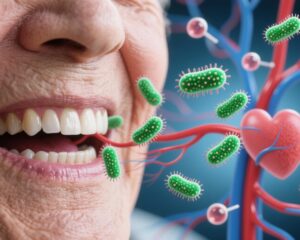Introduction: The Unseen Link Between Inflammation and Cancer
Chronic inflammation is a silent driver behind many common and deadly cancers worldwide. Globally, inflammation-induced cancers such as skin cancer, pancreatic cancer, and liver cancer account for approximately 20% of all cancer cases. Despite this significant burden, effective strategies to prevent cancers arising from chronic inflammation have been limited.
Recently, a groundbreaking study published in Nature Communications titled “Statin prevents cancer development in chronic inflammation by blocking interleukin 33 expression” by Park et al. (2024) has revealed a novel mechanism by which statins—widely used cholesterol-lowering drugs—might intercept the progression from chronic inflammation to cancer. This discovery opens a promising avenue in cancer prevention, especially for high-risk populations.
What is IL-33 and Why Does It Matter?
Interleukin 33 (IL-33) is a cytokine, a type of signaling molecule, produced mainly by epithelial cells. Acting as an “alarmin,” IL-33 is released upon tissue damage or stress and triggers immune responses, particularly activating type 2 helper T cells (Th2) and type 2 innate lymphoid cells (ILC2). These cells mediate allergic and inflammatory reactions.
However, IL-33’s role extends beyond allergy and inflammation—it plays a complex and sometimes contradictory role in cancer biology. In some cancers like multiple myeloma and colorectal cancer, IL-33 appears to have anti-tumor effects. In contrast, other tumors such as glioma, gastric, and pancreatic cancers seem to exploit IL-33 to promote tumor growth by fostering a type 2 immune environment and by influencing cellular signaling pathways that encourage tumor progression.
The effect IL-33 has depends largely on its location among different cell types—epithelial cells, fibroblasts, or immune cells—within the tumor microenvironment. Notably, IL-33 expression in epithelial cells during chronic inflammation in organs like the skin and pancreas positions it as a pivotal factor in initiating inflammation-related cancers.
How Statins Intervene: Blocking the IL-33 Pathway
The research team employed a comprehensive approach combining cellular experiments, animal models, human tissue analyses, and large-scale epidemiological data to unravel the role of IL-33 in inflammation-driven cancers and explore potential interventions.
Environmental toxins such as allergens and chemical irritants activate interconnected molecular pathways—TLR3/4 receptors and the TBK1-IRF3 signaling cascade—that culminate in increased IL-33 protein production. Elevated IL-33 in turn drives inflammation in skin and pancreatic tissues, setting the stage for cancer development.
When screening drugs approved by the US FDA, the researchers identified pitavastatin, a statin, as a potent inhibitor of this TBK1-IRF3 signaling, effectively reducing IL-33 levels. In mouse models, pitavastatin suppressed environmentally induced inflammation in skin and pancreas and crucially prevented the onset of inflammation-associated pancreatic cancer.
Examining human pancreatic tissue samples confirmed IL-33 was markedly overexpressed in both chronic pancreatitis (a common inflammatory precursor to cancer) and pancreatic cancer, compared with normal tissues. Furthermore, analysis of electronic health records from over 200 million individuals across North America and Europe revealed that patients using pitavastatin had significantly lower risks of developing chronic pancreatitis and pancreatic cancer.
Why Statins Could Become Chemopreventive Champions
Statins are widely prescribed for managing hyperlipidemia and cardiovascular risks in millions worldwide. Their safety profile is well-established, and side effects are generally mild, even with long-term use. These characteristics make statins ideal candidates for repurposing as cancer preventive agents.
Compared to new experimental TBK1 inhibitors under development, statins offer a far better cost-benefit ratio and well-validated long-term safety, enabling their potential use in chronic disease prevention settings.
Moreover, the study highlights innovative therapeutic potentials of statins beyond systemic usage. For example, topical statin applications might provide effective local control of chronic inflammatory skin conditions predisposing to skin cancers.
Potential Breakthrough Against Pancreatic Cancer
Pancreatic cancer notoriously evades current therapies due to its stealthy progression, highly immunosuppressive tumor microenvironment, and dense stromal barriers. The new results strongly suggest statins can disrupt the pro-tumorigenic inflammatory loop and prevent the emergence of immunosuppressive environments by blocking IL-33 pathways, particularly benefiting high-risk populations.
Clinical data correlating statin use with improved pancreatic cancer survival further reinforce these findings. A large-scale population study also showed pitavastatin significantly lowers pancreatic cancer risk compared to ezetimibe, an alternative lipid-lowering agent.
Broader Implications: Tackling Other IL-33-Dependent Conditions
IL-33 and the TBK1-IRF3 axis play roles in a range of chronic inflammatory diseases beyond cancer, including chronic obstructive pulmonary disease (COPD), atopic dermatitis, and asthma. Therefore, the anti-inflammatory and immunomodulatory benefits of statins might extend to managing these conditions by targeting IL-33-driven pathways.
Case Highlight: John’s Journey With Pancreatitis and Statins
John, a 58-year-old man with a history of high cholesterol and chronic pancreatitis, was started on pitavastatin therapy. Over five years, not only did his cholesterol stabilize, but regular medical imaging revealed no advancement to pancreatic cancer, a risk that loomed over his inflammatory condition. His oncologist attributed part of this success to statin therapy’s emerging role in reducing inflammation-driven cancer risk, reflecting how this new knowledge can translate into clinical practice.
Conclusion
The study by Park et al. (2024) marks a significant leap in cancer prevention science by revealing statins’ novel ability to block IL-33 expression and interrupt inflammation-induced carcinogenesis. This discovery holds immense potential for reducing the burden of inflammation-associated cancers such as skin and pancreatic cancer, which currently pose tremendous global health challenges.
Given their established safety, cost-effectiveness, and widespread availability, statins could soon become valuable tools not only for cardiovascular protection but also as chemopreventive agents in oncology. Future research is warranted to refine dosing regimens, assess their preventive impacts across diverse populations, and explore combinations with other therapies.
For clinicians and patients alike, this evolving paradigm offers hope and a proactive strategy in managing cancer risk related to chronic inflammation.
References
Park, J.H., Mortaja, M., Son, H.G. et al. Statin prevents cancer development in chronic inflammation by blocking interleukin 33 expression. Nat Commun 15, 4099 (2024).



